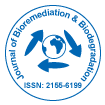Fungal-Based Bioremediation: Harnessing Fungi for the Cleanup of Emerging Pollutants in Aquatic Ecosystems
Received Date: Nov 01, 2024 / Published Date: Nov 30, 2024
Abstract
The contamination of aquatic ecosystems by emerging pollutants, including pharmaceuticals, personal care products, industrial chemicals, and microplastics, poses significant ecological and human health risks. Traditional methods of pollution management often fall short in addressing the persistent and complex nature of these pollutants. Fungal-based bioremediation, leveraging the metabolic versatility of fungi, has emerged as a promising, eco-friendly approach for the degradation and detoxification of these contaminants. Fungi possess a unique array of enzymatic systems, including oxidative enzymes such as laccases, peroxidases, and cytochrome P450s, which enable them to degrade a wide range of organic pollutants. Additionally, their ability to form mycelial networks in aquatic environments facilitates the absorption, accumulation, and transformation of pollutants, making fungi ideal candidates for bioremediation strategies. This review discusses the potential of fungi in bioremediation, highlighting their mechanisms of pollutant degradation, the factors that influence their efficacy in aquatic systems, and the challenges associated with scaling up fungal-based remediation techniques. Furthermore, the review explores recent advances in fungal biotechnology and genetic engineering to enhance their pollutant-degrading capabilities, offering insights into the future of fungal bioremediation in cleaning up aquatic ecosystems.
Share This Article
Recommended Journals
Open Access Journals
Article Tools
Article Usage
- Total views: 309
- [From(publication date): 0-0 - Apr 04, 2025]
- Breakdown by view type
- HTML page views: 152
- PDF downloads: 157
